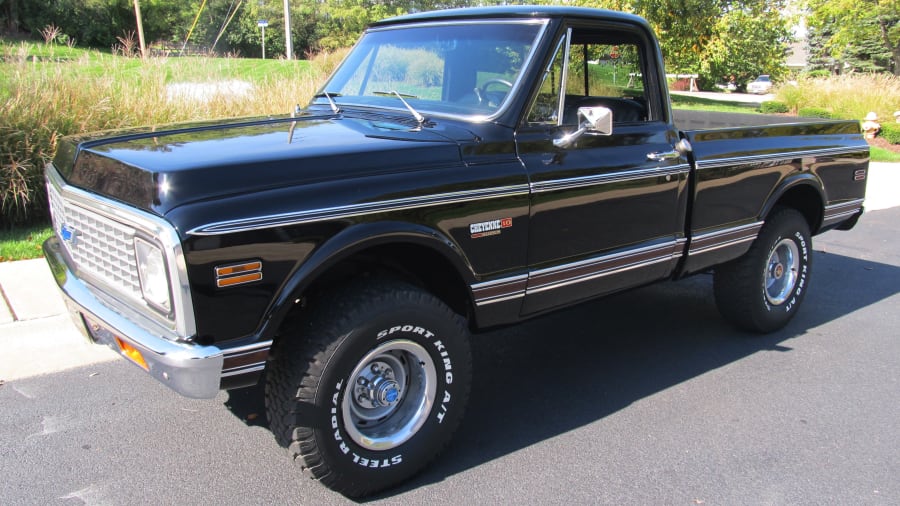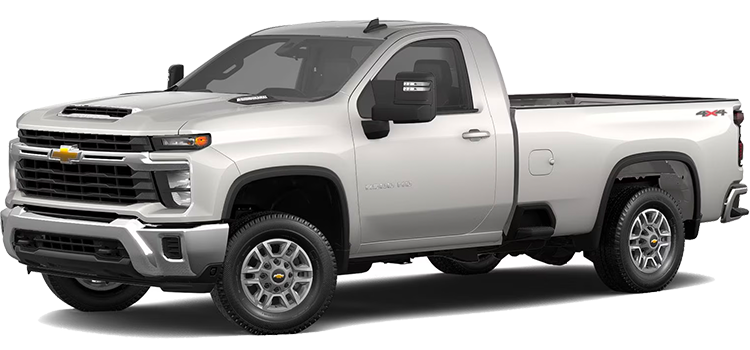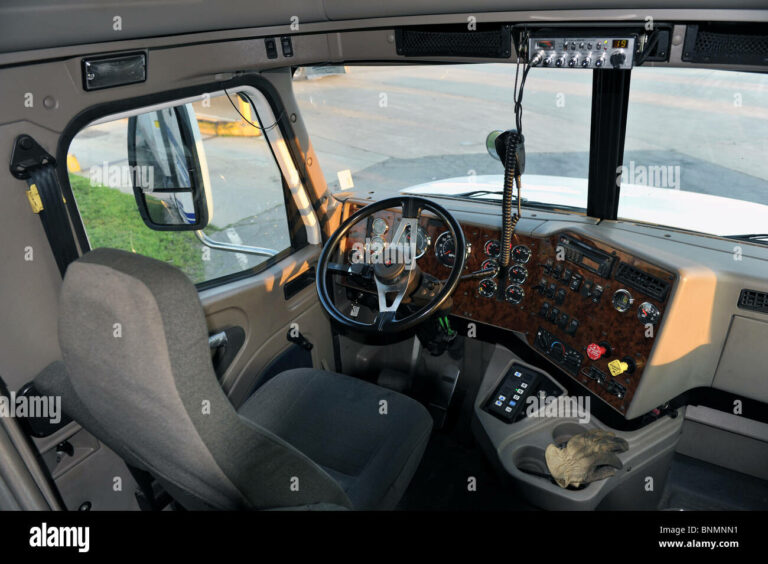What Other Trucks Will A Cap Fit That Came Off A Chevrolet Short Box Regular Cab Truck?
What Other Trucks Will A Cap Fit That Came Off A Chevrolet Short Box Regular Cab Truck? cars.truckstrend.com
Truck caps, also known as camper shells or toppers, are invaluable accessories for truck owners, providing secure, weather-protected storage space for tools, gear, or even an impromptu sleeping area. Given their significant cost, it’s natural to wonder if a perfectly good cap from a previous truck can be transferred to a new one. This article delves into the specific challenge of finding compatible vehicles for a truck cap that originated from a Chevrolet Short Box Regular Cab Truck. Understanding the nuances of truck bed dimensions and design is crucial for a successful and satisfactory fit.
Understanding the "Chevrolet Short Box Regular Cab Truck" Baseline
What Other Trucks Will A Cap Fit That Came Off A Chevrolet Short Box Regular Cab Truck?
Before exploring compatibility, it’s essential to define the donor truck. A "Chevrolet Short Box Regular Cab Truck" typically refers to a full-size Chevrolet pickup (like a Silverado 1500, 2500, or 3500) configured with a Regular Cab and a bed that is shorter than the "long box" option.
Important Clarification on "Short Box" for Regular Cabs:
While the term "short box" often conjures images of the 5’8" bed commonly found on Crew Cab or Extended Cab trucks, for a full-size Regular Cab Chevrolet, the "short box" option is almost universally a 6.5-foot bed (approximately 78-79 inches). The true 5’8" (69-70 inches) bed is generally not offered with a Regular Cab in full-size trucks. Therefore, for the purpose of this article, we will primarily assume the donor cap came from a full-size Chevrolet Regular Cab with a 6.5-foot bed. If your cap came from a very specific, rare configuration (e.g., a custom build, or a much older, smaller truck like an S-10 where a "short box" might be different), the advice below will still apply in principle, but the specific dimensions will differ.
The cap from this truck was custom-molded to fit not only the length and width of the 6.5-foot bed but also its specific bed rail height, the curvature of the tailgate, and the body lines and cab height of that particular Chevrolet generation. These details are paramount when considering fitment on other vehicles.
Key Dimensions and Factors for Cap Compatibility
Truck caps are precision-fit accessories, and even minor discrepancies in dimensions can lead to a poor fit, compromised sealing, and an unsightly appearance. Here are the critical factors to consider:
- Bed Length: This is the most obvious and non-negotiable dimension. A cap designed for a 6.5-foot bed must go on a 6.5-foot bed. Even an inch or two difference will result in significant overhang or an uncloseable tailgate.
- Bed Width (Inner and Outer Rail): Truck bed widths vary significantly between manufacturers and even generations. The cap’s base must sit flush on the inner and outer edges of the bed rails for proper sealing and secure clamping.
- Bed Rail Height: The height from the top of the bed rail down to the bed floor can differ. If the recipient truck’s rails are lower, the cap might sit too high, creating a gap. If they are higher, the cap won’t sit flush.
- Cab Height and Body Lines: The front profile of the cap is typically designed to align aesthetically and aerodynamically with the specific cab height and body lines of the donor truck. A mismatch here will result in an awkward visual gap or overlap between the cap and the new truck’s cab, affecting both appearance and potential airflow.
- Tailgate Design: The top edge and curvature of tailgates vary. A cap’s rear seal is molded to conform to the donor truck’s tailgate. A different tailgate design on the recipient truck can lead to significant gaps, allowing water and dust intrusion.
- Bed Rail Caps/Liners: Aftermarket bed rail caps or spray-in liners can slightly alter the effective dimensions of the bed rails, potentially affecting how the cap seats.

Direct Compatibility: The Siblings and Close Relatives
The most straightforward path to finding a compatible truck for a cap from a Chevrolet Short Box Regular Cab is to look within the General Motors (GM) family.
- GMC Sierra (Same Generation, Equivalent Configuration):

- Likelihood of Fit: Very High (Often a direct, perfect fit).
- Reasoning: Chevrolet Silverado and GMC Sierra trucks are built on the same platforms, sharing identical bed dimensions, cab heights, and body lines within the same generation. A cap from a 2015 Chevrolet Silverado Regular Cab 6.5-foot bed will almost certainly fit a 2015 GMC Sierra Regular Cab 6.5-foot bed.
- Important Note: The "same generation" aspect is critical. GM frequently updates its truck platforms, and dimensions can change between generations (e.g., a cap from a 2010 Silverado will not fit a 2020 Silverado). Always verify the exact model years and platform generations.
Beyond the direct sibling, the compatibility quickly drops off.
Potential "Near Fits" and Challenges (Other Brands/Generations)
When moving beyond the exact same make and generation, the chances of a perfect, sealed fit diminish rapidly.
- Older Generations of Chevrolet/GMC (e.g., GMT800, GMT900 to K2XX, T1XX):
- Likelihood of Fit: Low to None.
- Challenges: While they are still GM trucks, bed dimensions, rail heights, cab profiles, and tailgate designs evolve significantly between generations. A cap from a 2005 Silverado (GMT800) will not fit a 2015 Silverado (K2XX) perfectly, and vice-versa. There will be noticeable gaps, sealing issues, and aesthetic mismatches.
- Ford F-150 (Similar Bed Lengths):
- Likelihood of Fit: Extremely Low.
- Challenges: Ford’s 6.5-foot beds (often called "standard box" for Regular Cabs) might have a similar length, but their bed width, rail height, tailgate design, and cab-to-bed relationship are almost certainly different. Even minor differences in width (an inch or less) will prevent the cap from sitting flush or allow for significant leaks. The body lines and cab height will also rarely align.
- Ram 1500 (Similar Bed Lengths):
- Likelihood of Fit: Extremely Low.
- Challenges: Similar to Ford, Ram trucks have distinct bed dimensions, rail heights, and cab designs. A cap designed for a Chevy will not seal properly or look aesthetically pleasing on a Ram, despite potentially similar bed lengths. Ram’s Rambox storage system also adds complexity.
- Toyota Tundra / Nissan Titan (Similar Bed Lengths):
- Likelihood of Fit: Extremely Low (effectively none).
- Challenges: Japanese full-size trucks have entirely different design philosophies and manufacturing tolerances compared to American trucks. Their bed dimensions, rail heights, and body lines will not match a Chevrolet cap.
- Mid-Size Trucks (Chevrolet Colorado/GMC Canyon, Toyota Tacoma, Ford Ranger, Nissan Frontier):
- Likelihood of Fit: Absolutely None.
- Challenges: These trucks are in a completely different size class. Their beds are significantly narrower, shorter, and have different rail heights. A full-size truck cap simply cannot fit a mid-size truck.
The Reality of "Universal Fit": It Doesn’t Exist
The concept of a "universal fit" truck cap is a myth. Manufacturers design caps with precise molds that account for every curve, angle, and dimension of a specific truck model and generation. Attempting to force a cap from a Chevrolet onto a different make (or even a different generation of Chevy) will lead to numerous problems:
- Compromised Weather Sealing: Gaps between the cap and bed rails or tailgate will allow water, snow, and dust to enter, defeating the primary purpose of a cap.
- Security Issues: A poor fit means the cap won’t latch or lock securely, making it easy for theft or accidental opening.
- Aesthetic Mismatch: The cap will look "off" – either too wide, too narrow, too high, or with awkward gaps against the cab. This significantly detracts from the truck’s appearance.
- Potential Damage: Forcing a fit can stress the cap’s fiberglass or aluminum frame, leading to cracks or warping. It can also damage the truck’s bed rails.
- Safety Concerns: A poorly secured cap can shift during driving, potentially leading to dangerous situations or even falling off.
While some individuals attempt to "make it work" with excessive weather stripping, shims, or custom brackets, these are often temporary fixes that rarely achieve a truly waterproof or secure solution and almost always look suboptimal.
Practical Steps for Assessing Compatibility
If you’re determined to try and reuse a cap, here’s a practical approach:
- Measure Everything on the Donor Truck’s Cap:
- Length: Measure the inside length of the cap’s base from front to back.
- Width: Measure the inside and outside width of the cap’s base.
- Rail Height: Measure the vertical distance from the cap’s base (where it sits on the rail) to the top of the cap’s front opening (where it meets the cab).
- Tailgate Cutout: Note the shape and depth of the cap’s rear cutout designed for the tailgate.
- Measure Everything on the Potential Recipient Truck’s Bed:
- Bed Length: Measure the inside length of the truck bed from the bulkhead to the closed tailgate.
- Bed Width: Measure the width of the bed rails (inner and outer edges) at the front, middle, and rear.
- Rail Height: Measure the vertical distance from the top of the bed rail to the bed floor.
- Cab Height: Measure from the top of the bed rail to the highest point of the truck’s cab.
- Tailgate Shape: Observe the top edge and curvature of the tailgate.
- Research Specific Model Years: Consult owner’s manuals, manufacturer specifications, or online forums dedicated to truck enthusiasts. Many forums have detailed discussions about bed dimensions for various models and years.
- Physical Test Fit (If Possible): The absolute best way to determine compatibility is to physically place the cap on the potential recipient truck. Even then, be aware that minor differences might only become apparent after a rainstorm or extended use.
- Consult a Truck Cap Dealer: Local truck accessory shops or cap dealers have extensive knowledge about fitment and often have databases of truck bed dimensions. They can provide expert advice and even offer services for used caps.
Important Considerations Before Transferring
- Cost vs. New: Factor in the potential costs of modifications, weather stripping, new clamps, or even body shop work if you’re trying to force a fit. Sometimes, the combined effort and compromise make buying a used cap specifically designed for your new truck (or a new one) a more cost-effective and satisfactory solution in the long run.
- Aesthetics and Resale Value: A cap that doesn’t fit properly can detract significantly from the appearance and potential resale value of your truck.
- Warranty: Any modifications to the cap or truck to force a fit could void warranties.
Compatibility Assessment Table
Here’s a summary of the likelihood of a cap from a Chevrolet Regular Cab Short Box (6.5-foot bed) fitting other trucks:
| Recipient Truck Type | Likelihood of Fit | Key Fitment Challenges | Notes |
|---|---|---|---|
| GMC Sierra (Same Generation, 6.5ft Regular Cab) | Very High | Minor cosmetic differences possible (e.g., trim alignment) if not exact model match. | Best and often only true direct fit. Shared platform and dimensions are key. Verify exact model years/generations. |
| Chevrolet/GMC (Different Generation, 6.5ft) | Low | Bed length might be similar but width, rail height, tailgate design, and cab profile will differ. Significant gaps and sealing issues likely. | Dimensions change significantly between generations. A 2005 cap won’t fit a 2020. |
| Ford F-150 (6.5ft Bed) | Extremely Low | Bed width, rail height, tailgate curvature, and cab-to-bed relationship are almost certainly different. Guaranteed gaps, poor seal, and aesthetic mismatch. | Ford’s bed designs are distinct from GM’s. |
| Ram 1500 (6’4" or 6’7" Bed) | Extremely Low | Similar to Ford, distinct bed dimensions, rail height, and tailgate design. Rambox option (if present) makes fit impossible. | Ram beds have unique features and dimensions that won’t align with a Chevy cap. |
| Toyota Tundra / Nissan Titan (6.5ft Bed) | Extremely Low | Completely different bed dimensions (length, width, height), tailgate design, and cab aesthetics. Zero chance of a proper seal or appearance. | Asian full-size trucks have entirely different designs. |
| Mid-Size Trucks (Colorado, Tacoma, Ranger, Frontier) | None | Drastically different bed lengths, widths, and rail heights. A full-size cap is far too large and cannot be made to fit safely or practically. | These are smaller trucks; a full-size cap is incompatible. |
| Chevrolet/GMC (Same Gen, Other Cab/Bed Config) | None | If the cap is truly from a 6.5ft regular cab, it won’t fit a 5’8" short bed (often on crew/extended cabs) due to length. If from a 5’8" crew cab, it won’t fit a 6.5ft regular cab for the same reason. Cab height differences also play a role. | While the make is the same, the specific bed length and cab-to-bed relationship dictate fitment. A 6.5ft cap won’t fit a 5’8" bed, and vice-versa. |
Frequently Asked Questions (FAQ)
Q1: Can I put a cap from a 6.5-foot bed on a 5’8" short box or an 8-foot long box?
A1: No, absolutely not. The bed length is the most critical dimension. A cap designed for a 6.5-foot bed will either be too long (for a 5’8" bed) or too short (for an 8-foot bed). It will not fit or seal properly.
Q2: Will a cap from a Ford F-150 or Ram 1500 fit my Chevrolet Short Box Regular Cab?
A2: No, it is highly unlikely to fit well. While bed lengths might appear similar, the critical bed width, rail height, tailgate design, and cab body lines are different between manufacturers. You will encounter significant gaps, poor sealing, and an unsightly appearance.
Q3: What if the cap came off a Chevrolet Extended Cab or Crew Cab with a 6.5-foot bed? Will it fit my Regular Cab with a 6.5-foot bed?
A3: The bed length will match, which is a good start. However, you’ll need to pay close attention to the cab height and body lines. Sometimes, caps designed for Extended or Crew Cabs have a slightly different front profile or overall height to match their respective cabs. While more likely to fit than a different brand, a perfect aesthetic match might still be elusive.
Q4: Is it worth trying to make a cap fit if it’s not a direct match?
A4: Generally, no. While minor adjustments (like adding thicker weather stripping) can sometimes compensate for very small discrepancies, trying to force a cap that isn’t a near-perfect match leads to persistent issues with water leaks, dust intrusion, security, and aesthetics. The time, effort, and potential cost of modifications often outweigh the benefit, especially when considering the compromises.
Q5: Where can I get precise measurements for my truck’s bed?
A5: You can find detailed bed dimensions in your truck’s owner’s manual, on the manufacturer’s official website (under specifications for your specific model and year), or by using a tape measure to take accurate measurements yourself. Truck cap dealers also often have comprehensive databases of bed dimensions.
Concluding Summary
Reusing a truck cap is an environmentally friendly and cost-effective idea, but the reality of fitment is highly specialized. For a cap that came off a Chevrolet Short Box Regular Cab Truck (most commonly a 6.5-foot bed), your best and often only truly compatible option is another GMC Sierra of the exact same generation and bed configuration.
Attempting to fit this cap onto different truck makes, or even different generations of Chevrolet/GMC trucks, will almost certainly lead to compromises in sealing, security, and aesthetics. While the appeal of saving money is strong, the tailored nature of truck caps means that a universal fit is a myth. Always prioritize precise measurements and, if possible, a physical test fit, but be prepared for the likelihood that a perfect match is only found within very specific, shared platforms. Ultimately, for optimal performance and appearance, a cap designed specifically for your new truck’s make, model, and year is the ideal solution.







